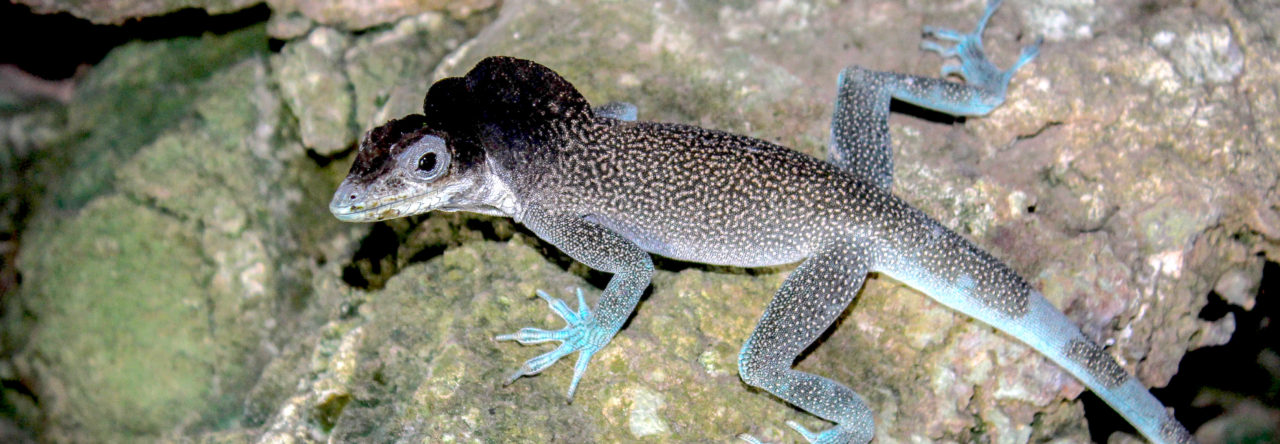Ken Miyata–naturalist, fly-fisherman, and photographer extraordinaire–died tragically young 30 years ago at the age of 32. Among the many items of unfinished business was his gargantuan thesis, Patterns of Diversity in Tropical Herpetofaunas, 787 pages in length and entirely unpublished. The dissertation ranges far and wide over topics herpetological and ecological–check out the Table of Contents at the bottom of the post. Over the years, Ernest Williams tried to talk a number of scientists into guiding some of the chapters into print, but the task was too large and so it has remained shelf-bound.
After a recent trip to Ecuador, I happened to be looking at the thesis for other reasons (parts of it were incorporated into the description of A. lyra by Poe et al. in 2009) and came across Chapter 2. This multi-part section includes separate studies on the habitat use of three anole species at the Río Palenque field station (A. chloris, A. festae and A. peraccae) and population biology and dynamics of two other species elsewhere (A. boettiger and A. gemmosus). Miyata argued that little was known of the population biology of South American anoles. Thirty years on, the situation isn’t all that different.
As a result, the data presented by Miyata in 1983 are still very relevant today and deserve wider circulation. And for that reason, we decided to publish a lightly-edited version of parts Chapter 2 in the Bulletin of the Museum of Comparative Zoology, appropriate given that Miyata was a grad student in the Museum (this paper, like all other Bulletins of the MCZ, is available online). In addition, in an online supplementary file, a number of his friends) Jerry Coyne, Chuck Crumly, Ray Huey, Eric Larson, Greg Mayer and B Wu) provide reminiscences of Ken.
The paper ranges widely over matters of anole ecology, behavior, and population biology, providing data on five species for which almost nothing exists in the literature. The paper’s findings are summarized in the abstract:
Little is known about the ecology and natural history of South American anoles. This study reports the results of a variety of different studies on several relatively common species of Ecuadorian Anolis. In part I, habitat use and population density are compared among three species of Anolis that occur in sympatry at a number of sites in Ecuador. The three species—A. chloris, A. festae, and A. peraccae—are roughly the same body size. These species perch primarily on tree trunks, and A. chloris perches substantially higher than the other two species, which are similar in perch height. Large differences from one year to the next were observed both in mean perch height and in population densities.
In Part II, natural history, growth rates, and population densities are reported for two little known Anolis species, A. bitectus and A. gemmosus. Although the two species are from nearby regions and are similar in microhabitat use, they show more differences than similarities in most aspects of their biology. The species have similar ranges in active body temperatures, but A. bitectus is thermally passive, whereas A. gemmosus appears to thermoregulate. Populations of A. gemmosus tend to remain constant through time, whereas A. bitectus undergoes moderate population fluctuations. Both species exhibit little sexual size dimorphism, but in A. bitectus females are larger, and in A. gemmosus males are larger. Anolis bitectus has a fairly high characteristic growth rate, whereas that of A. gemmosus is quite low.
- Evolution in Real Time on Lizard Island - March 23, 2025
- Spider Snags Adult Anolis osa - March 22, 2025
- An Homage to the Green Anoles of New Orleans - March 21, 2025








Cybokat
Which species of Dendrobates did he describe? Was the description published?
Julián Velasco
I think that is Ameerega erythromos (Vigle y Miyata, 1980): http://biostor.org/reference/4091
Rich Glor
The remembrances of Ken were all very touching. It was great to see some photographs of him too; I’ve known about him for years, but I don’t think I’d ever seen a photograph.
James (Skip) Lazell
Ken was a nifty guy: I knew him pretty well. His “thesis” was more like a life’s work, and he added a passion for fishing to that — which drowned him. Glad parts of his work are being taken up again!